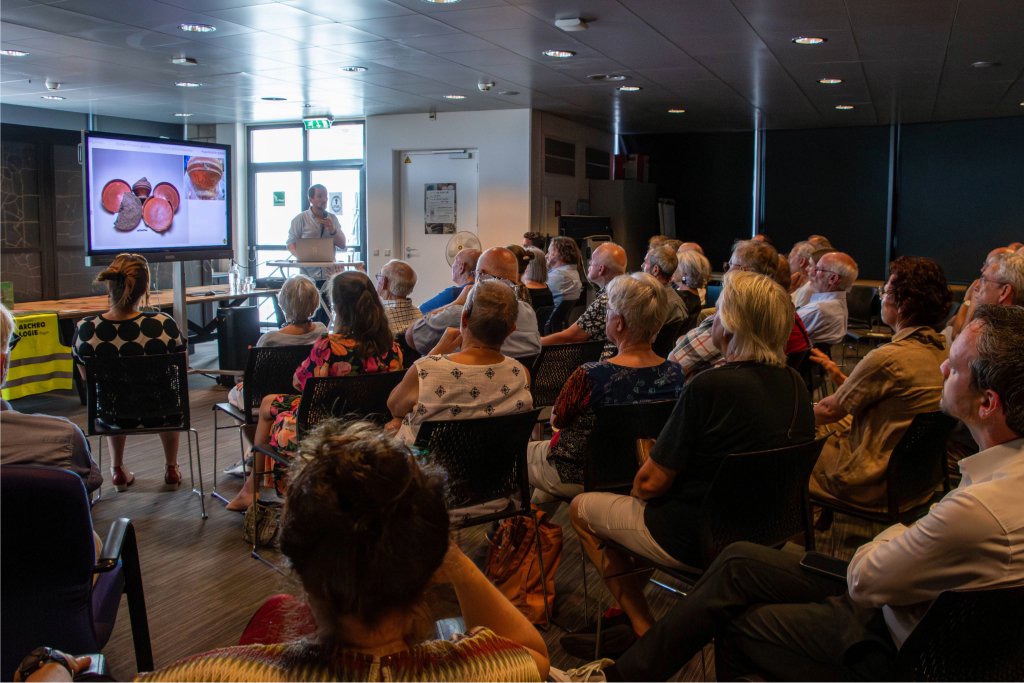Three names, one cup: the personal story of a Roman from Heerlen
Several finds were made during recent archaeological research on the Council House Square in downtown Heerlen. The most extraordinary find, however, is the grave of a Roman soldier, containing a personal property bearing his name. After further investigation, big news about the soldier's full name may be brought out. This news was the first to be shared with the audience of a lecture series surrounding National Archaeology Days on Saturday, June 14. The lecture took place at The Find, a stone's throw from where the grave was found.
There was not a single name on the now world-famous cup found in a grave on the Raadhuisplein in Heerlen, but cleaning it revealed two more names inscribed on the bottom. On the wall was the abbreviation FLAC, and on the bottom emerged the names FAUSTI and VALERI. It is rare to find such a personal inscription - let alone multiple names on one object!
What do these names mean? They probably refer to a Roman named Faustus Valerius Flaccus - or perhaps Faustus Valerius Placidus. We don't know for sure. Flaccus and Placidus were both common surnames (cognomina) in the Roman Empire.
The name Valerius points to a well-known, ancient family from Italy: the Valerii. From them came such high-ranking administrators as Publius Valerius Flaccus and Gaius Valerius Flaccus, a well-known writer. Whether this Faustus was related to them, we do not know. Perhaps he was a distant relative - someone with a more modest life.
Why was his name on a cup? Probably to indicate who he belonged to, especially if he had to share his things with others. Officers usually didn't bother with this: they didn't sleep with eight men in a tent. But an ordinary soldier or civilian did.
Thus, this small cup - found in a grave, in the middle of Heerlen - tells a surprisingly personal story. A glimpse of a man's life, almost 2,000 years ago.
